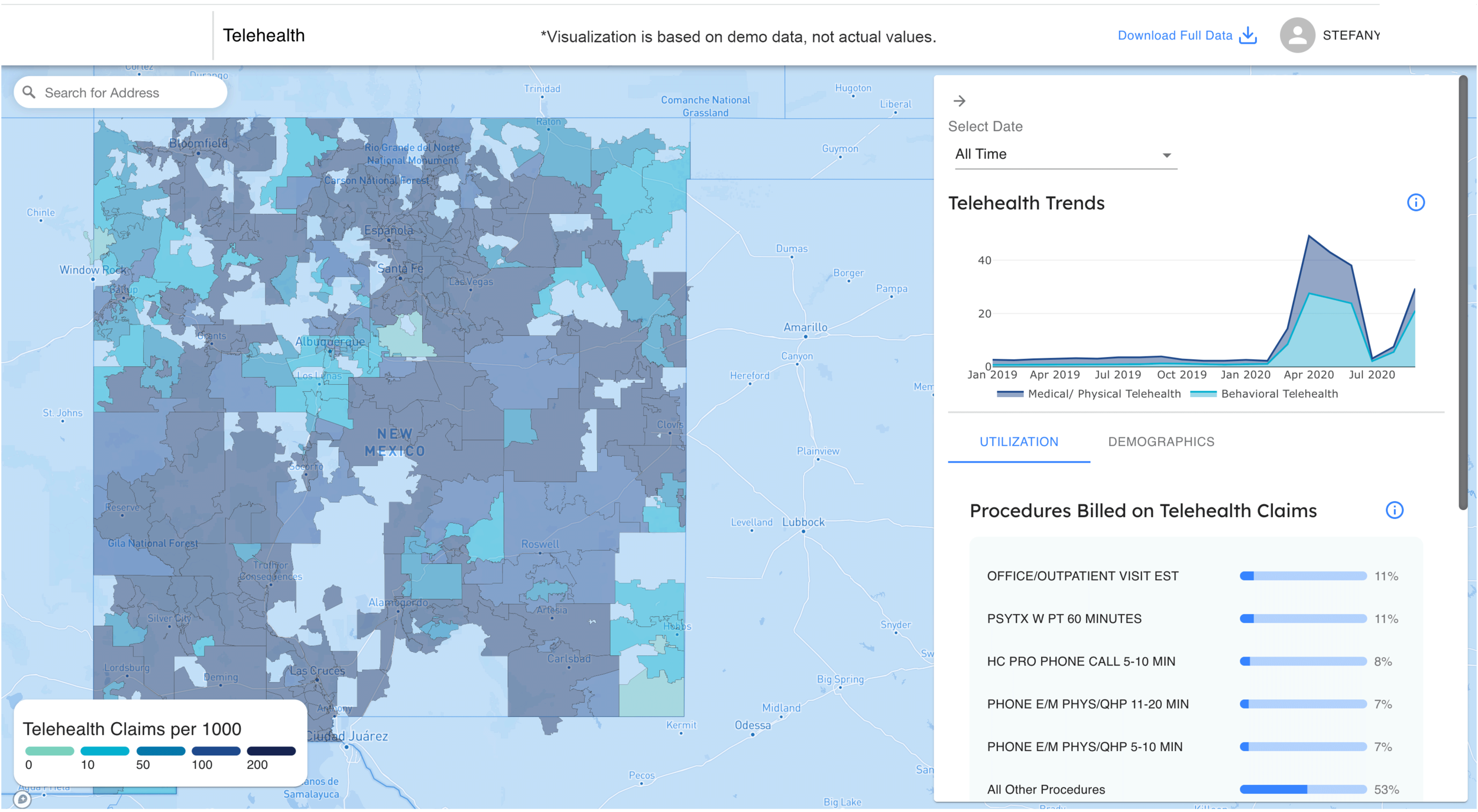Telehealth Tracking Portal
The Telehealth Tracking Portal blends claims, clinical, and community-level data to surface insights about telehealth utilization among a patient or program population. It informs long-term telehealth strategy by helping healthcare organizations and health agencies understand:
which patients are utilizing and adopting telehealth and their demographic patterns
what services are being delivered virtually and for which diagnostic conditions
where providers are billing for these services and how their billing patterns compare to others
where gaps in coverage or adoption may still exist
The tool can be expanded to ingest additional data from any healthcare organization, state, or federal agency to support a data-informed understanding of telehealth utilization, help design targeted programs with more precision, and improve reporting to stakeholders.
Supporting Data-Driven Telehealth Strategies
Healthcare organizations can load claims or billing data into the Telehealth Tracking Portal to quickly discover insights about their own telehealth programs.
The application can show where patients are stronger adopters of telehealth, demographic comparisons, and top conditions treated down to a neighborhood-level.
Insights also include overall telehealth utilization, its value, and potential areas to target for improvement, funding and expansion.
Identifying Gaps + Opportunities
The Telehealth Tracking Portal reveals top specialties accessed and top diagnoses on telehealth claims. Trends can be used to inform efficient and effective delivery of telehealth and to develop strategies to expand or improve telehealth initiatives.
Improving Access + Equity
Demographic insights show which patients are accessing telehealth. Healthcare organizations can evaluate program reach, identify areas with disproportionately high or low utilization, and determine where to target outreach to improve access to care.
Additional datasets, such as access to broadband, sociocultural information, and demographics can be overlayed with utilization data to identify new policy, education, reimbursement or benefit design that supports expansion of care and equitable access.



